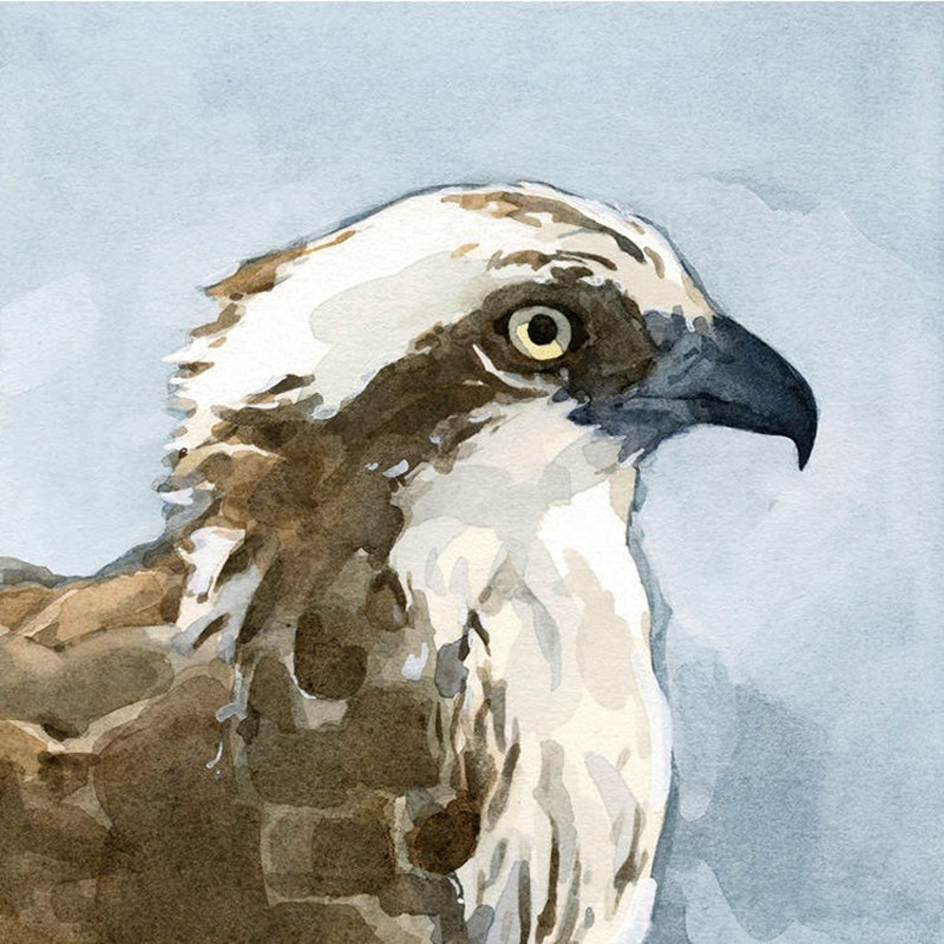How to Help Protect England’s Birds of Prey

England has three types of birds of prey: owls (nocturnal birds with large round heads, small beaks and forward-facing eyes), falcons (fast hovering birds with tapered wings and tails and fairly small). And hawks or eagles (larger soaring birds with very large bills and broader wings).
- Sparrowhawks have mottled brown/blue/grey white colouring, and can be found in some gardens (take care as they are very predatory on small animals).
- Buzzards have brown feathers and broad wings, with short tails. They are often found in grasslands and woodlands and around farms.
- Red kites have reddish-brown feathers and black-tipped wings with white under patches and forked tails. They are often found in woods and farms, mostly in southeast England.
- Kestrels have small grey heads and tails with ginger backs and speckled bellies. They are common on grasslands and heathlands.
- Peregrine falcons have slate-grey colours with white throat/cheeks, a ‘black moustache’ and are often found in towns and by coastal cliffs. Common up north and in southwest England.
- Hobby is a small bird (again with a ‘black moustache’ and slate-grey feathers with black streaks and ‘red trousers!’ Common on heathlands and wetlands in the south.
- Merlin is blue-grey and cream (male) or grey-brown (females) and common on English moors and coastal marshes.
- Hen harriers are medium brown streaked (females) or blue-grey with black wingtips (male) and often found on heathland, farmland and by the coast (they occasionally breed on upland moors).
Support Responsible Land Management
Good land management gives birds of prey a safe place to live and hunt. Hedgerows, wildflower margins and uncultivated patches all give shelter and food for their main prey, like mice and voles.
Farms and estates can keep old trees and create wildlife-friendly ponds, helping both the birds and their food web. If you work the land or visit it, choose to back those who use wildlife-friendly practices.
Report Illegal Activity
Sadly, birds of prey are sometimes poisoned or caught by traps. If you spot suspicious behaviour, like dead birds or people setting traps, contact the Wildlife Crime Unit (can be anonymous through Crimestoppers) and your local wildlife rescue.
Quick action can protect birds and send a clear sign that this behaviour will not be accepted. Even small details help when reporting — think time, place and what you saw.
Join or Support Conservation Groups
Many groups across England work hard to monitor and protect raptors. They track nests, rescue injured birds, and speak up for better laws. Becoming a member or donating helps fund this work.
Preserve Nesting Sites
Birds of prey return to the same nest sites year after year. Old trees, cliffs and even church towers may hide precious nests. When you find a nest, keep back and tell others to do the same.
If work or tree felling is planned nearby, wait until the young have left the nest or ask experts how to proceed. Even in your garden, leaving dead trees can help kestrels or owls find a home.
Reduce Use of Chemicals
Poisons like rodenticides can harm birds of prey that eat poisoned rats or mice. Where possible, use non-toxic methods to control rodents and always follow advice if you must use chemicals.
Encourage local schools and councils to avoid sprays and pellets that can work their way up the food chain. Every small change helps lower the risk to hawks and owls.
Safeguard Local Wildlife
Birds of prey depend on healthy numbers of small mammals, birds and insects. By planting native shrubs, leaving long grass and not mowing wild patches, anyone can help create homes for these vital species.
Healthy ecosystems support all parts of the food chain, from the smallest beetle to the boldest buzzard.
Support Wildlife-Friendly Laws
Laws protect nests and ban the killing of birds of prey, but these rules need strong backing. Support campaigns or write to your MP if local or national rules come up for review.
Stay informed about issues like new developments, wind farms or farmland changes in your area that could affect raptor habitats.
Enjoy Watching Responsibly
Watching birds of prey in the wild is exciting. If you visit nesting sites, stay quiet and at a distance. Keep dogs on leads so they do not disturb ground-nesting birds. Never try to bait or call birds close. Instead, enjoy the sight with binoculars and leave no trace behind.
Ospreys – Fish-Eating Birds of Prey

Ospreys are England’s fish-eating birds of prey. They are the pescatarians of the bird world! Due to hunting in Victorian times, at one point there was just one breeding pair left (in Scotland).
They are a conservation success story, thanks to efforts by volunteers at Rutland Water (a manmade reservoir in the East Midlands, brought back from the brink of extinction.Ospreys are still pretty rare in England, with the only other main place to see them being in Cumbria.
From a distance, ospreys look like large brown-and-white gulls. But up-close, they are very different. They use reversible toes (that turn 180 degrees) to hunt for slippery fish.
They are such good ‘fishermen’ that around 70% of dives are successful. And if hungry, they usually catch a fish in around 12 minutes.
Ospreys can live for up to 20 years, in the wild. They are migrating birds, that arrive in England from West Africa (a 3000 mile journey) around February.
They build nests in many areas, and osprey eggs often hatch one-by-one, sometimes up to 5 days apart. The birds are possibly named after the Latin word ‘ossifragus’ (it means ‘bonebreaker).
How to Help Injured/Orphaned Birds of Prey
Birds of prey are wild creatures, so should always be left alone, unless you know they are injured or in danger. Parents are usually nearby, so observe if concerned.
- If you need help, call your nearest wildlife rescue (or Raptor Rescue).
- If you have to relocate the birds (say to a vet or wildlife rescue).
- Wear gloves (or use a thick towel with no tassels), before placing them in ventilated boxes.
- Keep in a quiet area at room temperature, until help arrives.
- Do not give any food or water.
Understanding Birds of Prey

Birds of prey have eyesight that lets them spot prey from great distances, when soaring high above.
Once in sight, they use their powerful talons to grasp and immobilise it. Their wings are built for speed and manoeuvrability, making them master hunters. Several birds of prey species face endangerment:
- Bald Eagle: Once facing extinction, it has shown recovery in some areas.
- Red Kite: Known for its reddish-brown body and forked tail, it has seen population declines due to poisoning and habitat loss.
- Peregrine Falcon: Famous for being the fastest bird, it has suffered from DDT pesticide exposure in the past.
Modern farming methods and deforestation has eroded natural habitats. Then birds of prey lose their nesting and hunting grounds. Also pollutants sand pesticides (like rat poison and DDT) build up in smaller animals, and affect food chains.
Shifting climates disrupt the breeding and eating habits, and warming temperatures and changing weather affect prey populations.
Laws such as the Wildlife and Countryside Act enforce penalties for harming these birds. Legal measures ensure that hunting, trapping, and trading are curtailed.
A True Rescue Story of a Bird of Prey

Queen of the Sky is the story of how artist Jackie Morris rescued a peregrine falcon from the sea, off the remote coast of West Wales. With her friend, they nursed it back to the wild, after developing a bond you would never think was possible between a human and a wild bird of prey. Includes beautiful sketches, photographs and paintings.






